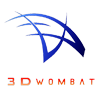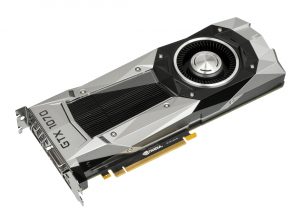
Table of Contents
Introduction
Pre-requisites
Choosing the right motherboard for your new computer system is never easy because there is a very wide range of technical details and prices to sift through. We will guide you through the important aspects and recommend some good components for your budget.
Before you begin browsing motherboards, you should decide which CPU you want to buy first, an note the type and socket it uses. It is crucial that they be compatible with each other. This will determine many aspects of the motherboard's functionnalities.
You may also want to select your RAM and video card (GPU) first to match the performance and compatibility. It's worth checking each motherboard’s list of compatible RAM speeds, types and brands.
What is a Motherboard
The motherboard is the coordinator of your computer system. It will host everything else, from your CPU, GPU, RAM and all other peripheral connections (mice, keyboard, tablet...). It make everything work together seamlessly determines what connectors and ports are present on your computer, in the back and inside. This will in turn decide which components and devices will be allowed to connect to the computer now and in the future.
The motherboard also defines the future expandability of your computer. It's size and internal connections (inside the computer case or laptop), will determine which component you can later use to upgrade to (video card or ). You can also look for a motherboard with Bluetooth, WiFi, a sound card and other specifications you may find useful, so take your time to look at the technical specifications of your purchase. In this article, we will concentrate mostly on what is essential to your computing performance for 3D work.
Motherboard Connections
Here are all the types of connectors that are part of the motherboard's influence. This is valid as much for a desktop than for a laptop, it's only the layout that differs. In fact, every electronic device has a motherboard, each of different size.
- Main Components : CPU, GPU, RAM
- Internal devices: PCI cards, network cards, hard drives
- Back and front connectors: Firewire, USB, eSata, ethernet
- Audio jacks: microphone, headphones, speakers
The motherboard also determines the basic user interface (BIOS) of your computer.
Technical Specifications
CPU Socket
The first thing to look for is the right socket type which is the receptacles that the motherboard uses to host the CPU. Depending on the category of processor, it's generation and the brand, CPUs will require different types of motherboards to unlock their full potential.
GPU Slots
You do not need to find a motherboard that supports integrated graphics viceo chips, as we recommend finding a CPU without one. Instead, find a motherboard that supports the type of port your dedicated video card will have.
RAM Compatibility
Make sure to check the motherboard manufacturer's website or forums to know which RAMS are recommended and compatible with your motherboard. The DDR type, speed and channel of the RAM must be taken into account properlt. Failing to do so may result in instabilities in the operations of the computer, noticeable as lags or crashes in the OS.
Form Factor
You will then need to choose the form factor of your computer. The motherboard size will influence the type of computer case you will need to fit everything into it. So, will it be a huge box, a normal box, or micro box or a laptop?
Big Tower (Office/Pro): Full ATX
Standard Tower (Recommended): Mid-ATX
Small Tower (For special situations): Micro-ATX
Most people will choose the normal-sized computer tower and this is what we recommend. This will be absolutely perfect for everyone starting out in 3D computer graphics. Bigger boxes are usually for professionnal use and experienced overclockers. Therefore, you can safely go with a (mid) ATX-sized computer. It will still allow for a good number of expansion and drives to be connected onto it.
Recommended Connectors

Essential Motherboard Connectors
- An Ethernet port 10/100/1000 Mbps (standard)
- 4x USB ports (minimum)
- 1x PCI-E slot (minimum)
- 2x PCI slots (minimum)
- 4x RAM memory slots
- Audio Sound Card
- CPU Fan connector
Optional Specifications:
- Wifi
- Bluetooth
- FireWire
- eSata
- Chassis Fan Connectors
- USB 3.0
- PS/2 ports (outdated)
Brands
We recommend that you purchase a trusted brand, that is known for the quality of its products. We usually prefer only ASUS' motherboards because of their well though designs and interface, but MSI and Gigabyte are also acceptable for their price to quality ratios. However, more mainstream and cheaper boards are not made with as much attention and this can be frustrating to set up and when you update your computer.
Price
You can expect to pay around between 100$ and 200$ for a good motherboard, depending on the quality and functionalitie. However, if you want to go on a tight budget, you can still get all the basics starting at around 50$, without much compromise. In this range, you should not expect to be able to overclock, or have a lot of functionnalities (in your BIOS).
Recommendations

Value
Recommended
Overclockers
All of these components are linked together. Changing the any of those usually means changing all the other components as well. The less likely is the computer case, because there are 3 standard sizes that haven't changed like technology has.
Connected Components
Go to the 'computer hardware' table of contents:
Guide on Finding the Optimal Computer Components
Tell us what you think, we welcome your comments! Did we miss something? - www.3Dwombat.com -
Join the Wombats
Opt-in our occasionnal newsletter to be the first to be informed of our new tutorials series, original content updates, special offers and important announcements! It’s free and spam-free, plus you can unsubscribe at any time.
Follow @3Dwombat on Social Media




